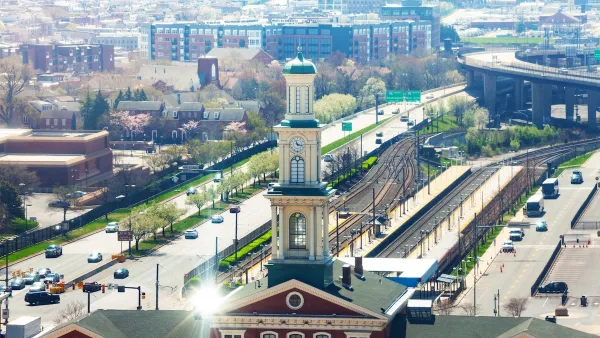The proposed 3roots San Diego is treading now familiar territory by attempting to appeal to Millennials. Much more novel, however, is the project's reclamation of a former mining pit.
"A 412-acre rock quarry in Mira Mesa, approved for reclamation in 1994, is being replanned to include a 25-acre community park instead of industrial development," reports Roger Showley.
Lehigh Hanson, a subsidiary of Dallas-based Heidelberg Cement Group, is creating the plan for the 3roots San Diego development, which would include 1,800 units in a mixed-use and residential community responding to demand from the Millennial generation. Showley quotes Lehigh Hanson consultant Brian Myers in the article, calling the development an "alt-Urban plan."
Antonio Pacheco picked up on the news of the proposed project for The Architect's Newspaper, with coverage that focuses a little more on the design work going into the project.
The development "would be constructed over what remains of the Carroll Canyon mine, a concrete aggregate and gravel mine that ceased operations in 2016," writes Pacheco. Here's more of his description of the current plan for the project:
The development is to be laid out with a mixed-use “innovation district” at its core that will maintain transit connections to a forthcoming extension of San Diego’s light rail system. The so-called Village Core area will feature 749 apartments, 120,000 square feet of retail spaces, and 20,000 square feet of creative office. Renderings for the project depict two parallel rows of warehouse-style structures surrounding a generous pedestrian courtyard.
FULL STORY: Converting an old mining pit into 1,800 homes

Planetizen Federal Action Tracker
A weekly monitor of how Trump’s orders and actions are impacting planners and planning in America.

Maui's Vacation Rental Debate Turns Ugly
Verbal attacks, misinformation campaigns and fistfights plague a high-stakes debate to convert thousands of vacation rentals into long-term housing.

San Francisco Suspends Traffic Calming Amidst Record Deaths
Citing “a challenging fiscal landscape,” the city will cease the program on the heels of 42 traffic deaths, including 24 pedestrians.

Amtrak Rolls Out New Orleans to Alabama “Mardi Gras” Train
The new service will operate morning and evening departures between Mobile and New Orleans.

The Subversive Car-Free Guide to Trump's Great American Road Trip
Car-free ways to access Chicagoland’s best tourist attractions.

San Antonio and Austin are Fusing Into one Massive Megaregion
The region spanning the two central Texas cities is growing fast, posing challenges for local infrastructure and water supplies.
Urban Design for Planners 1: Software Tools
This six-course series explores essential urban design concepts using open source software and equips planners with the tools they need to participate fully in the urban design process.
Planning for Universal Design
Learn the tools for implementing Universal Design in planning regulations.
Heyer Gruel & Associates PA
JM Goldson LLC
Custer County Colorado
City of Camden Redevelopment Agency
City of Astoria
Transportation Research & Education Center (TREC) at Portland State University
Jefferson Parish Government
Camden Redevelopment Agency
City of Claremont





























